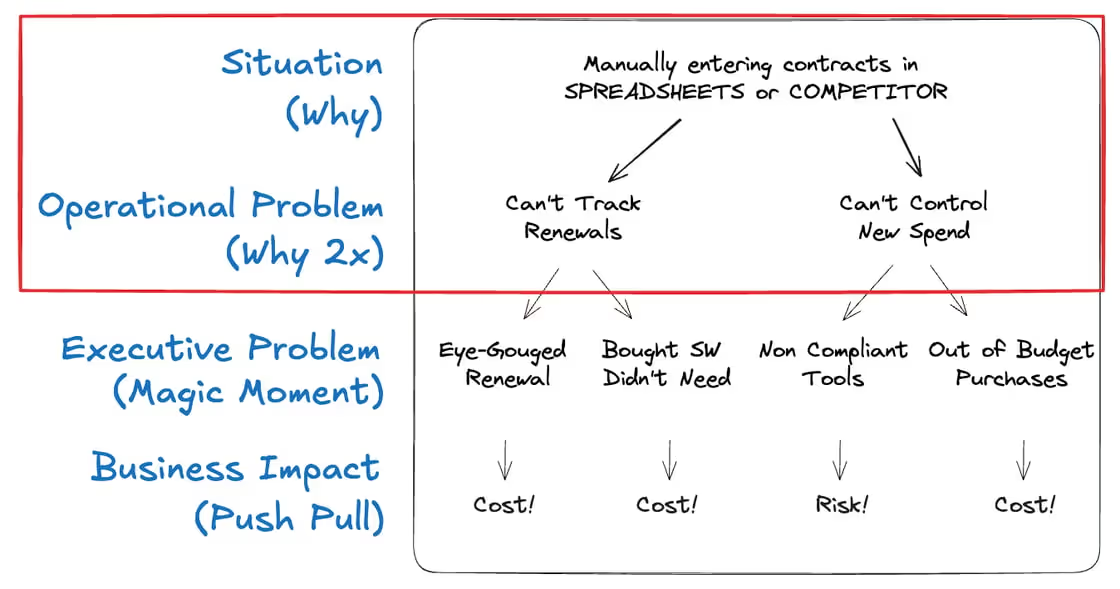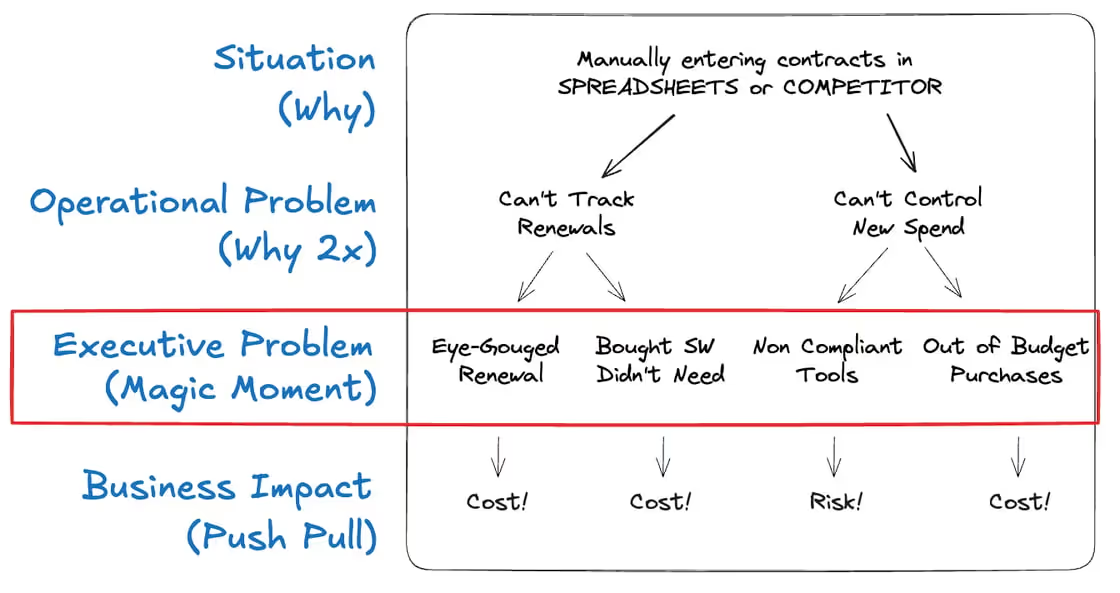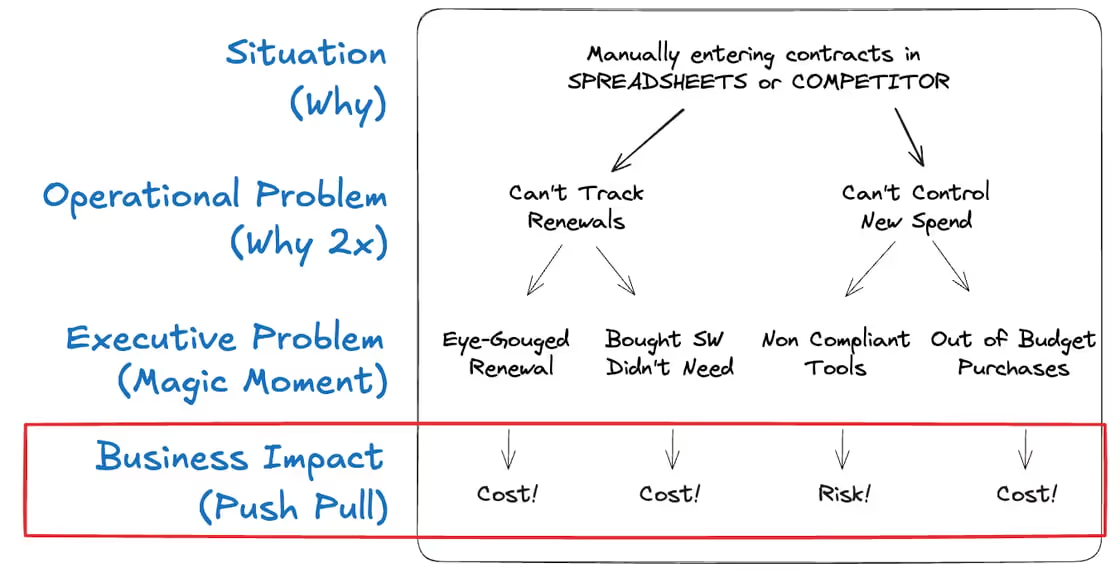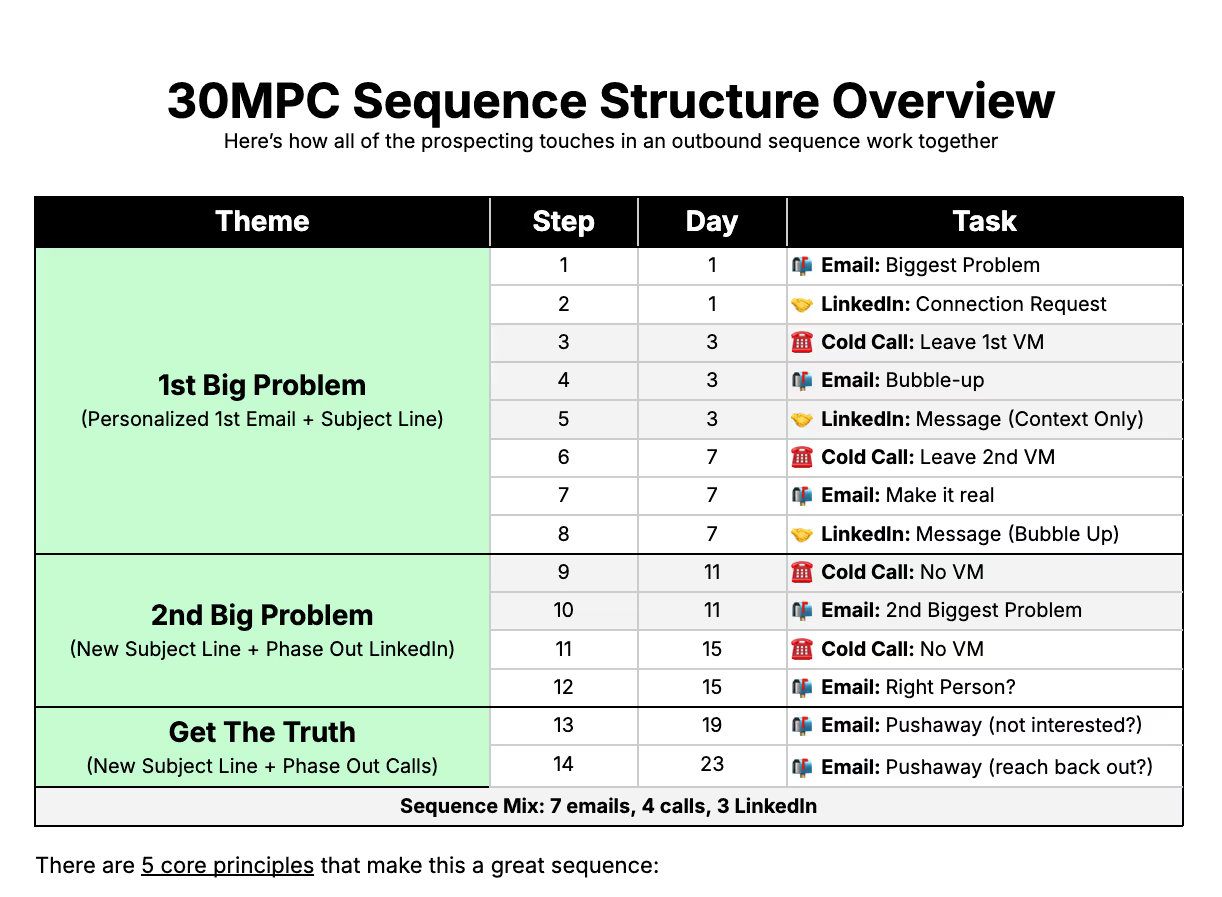In the last episode of Dragon Ball Z, we talked about the 4 levels of problems in discovery:
- Situation: How they literally do the thing
- Operational Problem: Something no one would want to do
- Executive Problem: Bad news a VP delivers to the CEO
- Business Impact: A C-Level metric, risk, or initiative
Now that you know the problems you wanna get, the questions are easy... kinda.
Most sellers ask cringey, leading sales questions that make a prospect puke in their mouth like "what would you do with all that time back in your calendar."
So we're gonna break down 4 questions that don't feel like sales questions so you can easily turn high-level situations into business impact for six / seven-figure problems:
- Ask why they took the call (2x) to drop into an operational problem
- Use magic moment questions to turn operational problems into executive problems
- Use push-pull questions to turn executive problems into business impact
Let's dive in, but this time let's pretend I was selling procurement software for one of my GTM advisory clients, BRM Labs.
TLDR: They automatically pull all of your vendor contracts so you never miss a renewal.
Ask why they took the call (2x) to drop into an operational problem

After you set your PPO agenda, the easiest thing to ask is why they took the call, even if it was an outbound deal:
So, my guess is you don't take every call that comes your way. So I guess, what prompted you to take this one today?
If they don't give you a problem, they'll say 1 of 3 things that you can turn into one:
- If they respond with a lead source, ask why again: Sure, I know I cold called you, but my guess is you don't take every call that comes your way. What was it that caught your ear?
- If they respond with a situation, use a multiple choice question: Ah, typically when someone's worried about tracking vendors on spreadsheets, it's because they're struggling to track existing renewals or control new spend. Which is it for you?
- If they respond with something they want, invert the feature benefit: Sounds like you want a better way to track your renewals, is that because there was a renewal that slipped by, or you're just trying to plan for the future?
Notice, we're basically just asking why again (phrased differently) any time they give us something other than a problem.
Use magic moment questions to turn operational problems into executive problems

Stories are often the bridge between operational problems and executive problems -- a story is simply what happened in real life because of the operational problem.
The Magic Moment Question is the easiest way to get your prospect to tell a story. The moment a prospect gives you a problem, ask when they realized it was a problem.
Let's continue the example from BRM above after we've asked why 2x:
Prospect: Yeah you know I'm really just worried because it's becoming impossible to track all of these renewals with how many more vendors we're bringing on.
Seller: Totally get it, we see it all the time right around employees. Hey, my guess is you didn't wake up last night in a cold sweat thinking about renewal tracking.
I guess.. when did you realize this was a problem? Did you renew software you didn't want, buy more licenses than you needed, or it's a gut feeling?
9/10 times, they'll gush out about the VP of Sales who auto-renewed their call recording tool with 30 seats for 20 reps and another vendor offering the same product for free.
(and that's a problem a VP would have to report to their CFO/CEO, oof)
Use push-pull questions to turn executive problems into business impact

Now that we got an executive problem, it's time to quantify it into business impact, or a C-Level priority, metric, or risk.
You don't have to quantify the entire business impact on a disco call, but if you can point to it, you're golden.
Asking about business impact can make a prospect defensive, so a push-pull question removes the leading nature of impact questions by letting them say it is or isn't actually causing a massive business problem.
Let's use a push-pull question to turn missed renewals into a broader fiscal issue:
[Praise them first] Hey, I know it's tough wrangling renewals on sheets and you're doing the right thing trying to get a system in place.
[Surface a key metric] I wanna make sure we're solving the right problem here, you mentioned getting software spend down to $1M from $1.5M was a key priority...
[Push-Pull] Would getting renewals sorted out put a material dent in that, or is it sort of a nice-to-have and there's a bigger play you plan to reduce spend?
By letting them know you're okay with them saying it's not that important, you remove the sales pressure of a traditional impact question and they're more likely to lean in and give you the truth.
***
That's a wrap folks! Oh, by the way...
There were actually 7 questions that I had to trim down to 4 for this noozy.
So if you want the other questions, check out this free toolkit: 7 Discovery Questions That Don't Feel Like Sales Questions
Toolkit: 7 Discovery Questions That Don't Feel Like Sales Questions

















